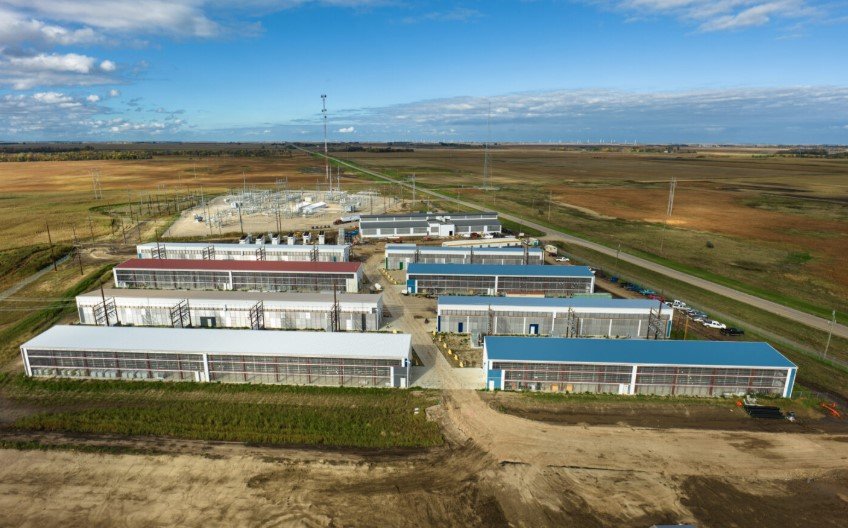State regulators set October and December sessions to weigh utility’s massive fossil-fueled expansion, as data center boom drives demand
Georgia’s energy watchdog is gearing up for a showdown this fall. The state’s Public Service Commission has agreed to hold public hearings on a controversial proposal from Georgia Power that would add nearly 10,000 megawatts of new power generation — mostly from natural gas — to keep up with ballooning electricity demand, largely driven by a surge in data centers.
The decision, made unanimously on Tuesday, sets the stage for a highly-watched debate over the future of the state’s energy mix. Critics warn the proposal leans too hard on fossil fuels at a time when climate concerns are mounting, while the utility insists the additions are critical to avoid blackouts and keep pace with growth.
A gas-heavy blueprint raising red flags
The expansion plan centers on the construction of new gas-burning turbines in Cartersville, Carrollton, and Effingham County. Combined, those facilities would deliver around 8,000 megawatts of power — more than 80% of the requested capacity.
Georgia Power’s proposal also includes an “all-source” request for proposals. That means it could explore alternatives like:
-
Purchasing electricity from existing gas-fired plants
-
Building battery energy storage facilities
-
Deploying hybrid setups combining both technologies
Still, the lion’s share is clearly fossil-fueled.
That has environmental groups — and some energy analysts — deeply concerned.
One sentence. To let it settle.
“It’s a carbon bomb dressed as a capacity plan,” said Holly Edmonds, a climate advocate with Georgia Interfaith Power & Light. She argued that relying heavily on gas at this stage amounts to locking in decades of emissions just to satisfy the short-term needs of hyperscale data hubs.

What’s fueling the demand?
So why the rush? In a word: data.
More than 80% of the proposed capacity is earmarked for electricity-hungry data centers. These facilities — some of which are being built by tech giants like Microsoft and Amazon — require vast, round-the-clock energy to power servers, cooling systems, and backup infrastructure.
And Georgia’s become a hotbed for them.
Low land prices, tax incentives, and existing grid access have made the state a magnet for hyperscale data development. Local officials in metro Atlanta and beyond have signed off on dozens of such projects in the past three years alone.
Georgia Power says it’s simply reacting to market demand.
“We’re not building on speculation,” said a company spokesperson. “These projects are driven by committed customers with specific load expectations over the next decade.”
That includes everything from new AI server farms to traditional cloud storage centers.
Key dates: when and where the battle plays out
The Public Service Commission has laid out a clear timeline for the debate:
-
First hearings: October (exact dates to be announced)
-
Second round: Early December
-
Final vote: December 19
Commissioners have already signaled they expect significant public input. The last time Georgia Power requested major capacity additions — back in 2022 — the PSC fielded more than 5,000 public comments, many critical of fossil fuel reliance.
This time could draw even more.
At least one commissioner has privately expressed concern over the gas-heavy direction, according to a source familiar with internal discussions.
A wider conversation about power, pollution, and progress
While Georgia Power argues that natural gas is a necessary “bridge fuel,” opponents point out that clean alternatives — like solar and wind, combined with storage — are getting cheaper and more scalable by the year.
Energy researcher Daryl Weston at Emory University says the company is facing a pivotal choice.
“They could take this moment to be bold — to really lead in clean grid modernization,” he said. “Instead, they’re going all-in on the fuel of the 1990s.”
A brief pause for emphasis.
Weston also noted that the utility’s parent company, Southern Company, has made public commitments to reach net-zero emissions by 2050 — a target that critics say this plan clearly contradicts.
Here’s how Georgia Power’s proposed capacity stacks up against typical energy investments today:
| Project Type | Estimated Megawatts | Carbon Impact | Lead Time |
|---|---|---|---|
| New gas turbines (GA) | ~8,000 | High emissions | 2–4 years |
| Battery storage (planned) | TBD (minor share) | Zero emissions | 1–2 years |
| Solar farms (not included) | None in proposal | Zero emissions | 12–24 months |
| Existing gas contracts | ~1,900 | Medium emissions | Immediate access |
What’s next? Eyes on Atlanta
Advocates on both sides are already gearing up for months of lobbying, testimony, and PR campaigns. Groups like the Sierra Club, Georgia Conservation Voters, and regional utility watchdogs plan to mobilize opposition. Meanwhile, business coalitions tied to data center development are expected to support the expansion.
Only one thing’s certain — Georgia’s energy future is now up for debate, and what happens this fall will shape how the state powers itself for decades to come.
